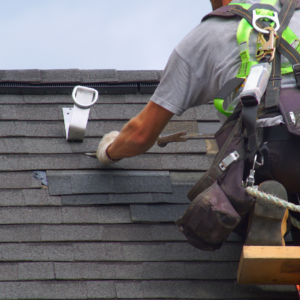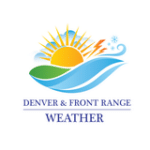Understanding the legal responsibilities of wildfire prevention and roof maintenance is crucial for homeowners, especially in regions prone to wildfires like Colorado. Failing to comply with these obligations can lead to significant safety hazards and potential legal repercussions. This article will guide you through these essential responsibilities to help you protect your property and ensure compliance with local laws.
Homeowners have specific legal responsibilities for wildfire prevention and roof maintenance, including maintaining defensible space around the property, using fire-resistant roofing materials, keeping gutters clean to prevent debris buildup, performing regular roof inspections, and complying with local fire codes and regulations. Ensuring compliance with these measures helps mitigate wildfire risks and maintain the integrity of your roof.
- Creating and Maintaining Defensible Space Around Your Property
- Choosing and Using Fire-Resistant Roofing Materials
- Keeping Your Gutters Clean to Prevent Debris Buildup
- Performing Regular Roof Inspections
- Complying with Local Fire Codes and Regulations
- Wildfire Prevention and Roof Maintenance: A Dual Approach to Safety
- Practical Tips for Effective Roof and Gutter Maintenance
- Ensuring Safety and Compliance
Key Takeaways:
- Maintaining defensible space around your property significantly reduces wildfire risk and increases the chances of your home surviving a wildfire.
- Using fire-resistant roofing materials enhances your home’s safety and complies with local building codes, reducing fire damage risk by up to 50%.
- Regularly cleaning your gutters prevents debris buildup, reducing fire hazards and protecting your roof from damage.
- Annual professional roof inspections help identify and address issues early, extending your roof’s lifespan and maintaining fire safety standards.
- Staying compliant with local fire codes and regulations is crucial for home safety and avoiding legal and financial penalties.
- Regular roof maintenance, including cleaning and inspecting, is essential for wildfire prevention and ensures the longevity of your roof.
- Implementing routine maintenance schedules and involving your family helps ensure your roof and gutters are well-maintained and wildfire-resistant.
There’s much more to know about these critical responsibilities, including practical tips and expert advice on how to meet these standards effectively. Keep reading to learn how to safeguard your home and ensure you’re fully compliant with all necessary regulations.
Creating and Maintaining Defensible Space Around Your Property
Creating and maintaining defensible space around your property is one of the primary legal responsibilities for wildfire prevention. Defensible space is the buffer between your building and surrounding grass, trees, and shrubs, essential for slowing or stopping wildfire spread. Clearing vegetation and combustible materials within 30 feet of your home, trimming trees and shrubs, removing dead plants, and keeping lawns mowed to a height of no more than 4 inches are crucial steps. Storing firewood and other flammable materials at least 30 feet away can significantly reduce fire risk. Local regulations often provide specific guidelines on maintaining defensible space, so it’s important to familiarize yourself with these requirements to ensure compliance with wildfire prevention and roof maintenance.
Choosing and Using Fire-Resistant Roofing Materials
Roofing materials play a significant role in wildfire prevention. Many local building codes mandate the use of fire-resistant materials, especially in wildfire-prone areas.
Using Class A asphalt shingles, metal roofing, clay and concrete tiles, or slate roofing can make a substantial difference in wildfire resilience. Fire-resistant roofing materials are designed to withstand severe fire exposure and contribute to the overall safety of your home.
Using these materials not only helps in wildfire prevention but also adds to the durability and longevity of your roof, ensuring you meet your legal responsibilities for wildfire prevention and roof maintenance.
Keeping Your Gutters Clean to Prevent Debris Buildup
Gutter maintenance is essential for both roof upkeep and wildfire prevention. Clogged gutters can accumulate leaves and other debris, creating a significant fire hazard.
To effectively maintain your gutters, clean them at least twice a year, especially if there are overhanging trees. Use a gutter scoop or high-pressure hose to remove debris, install gutter guards or screens to minimize buildup, and regularly inspect gutters to ensure they are secure and functioning properly. According to the USA Business Insurance, clogged gutters were found in 90% of homes destroyed by wildfires, highlighting the importance of regular maintenance.
By keeping your gutters clean, you can prevent debris buildup that could potentially ignite during a wildfire, thus fulfilling your legal responsibilities for wildfire prevention and roof maintenance.
Performing Regular Roof Inspections
Regular roof inspections are vital for identifying and addressing potential issues before they become major problems. Inspections help in maintaining the structural integrity of your roof and ensuring it meets fire safety standards. Here’s how to do it:
- Look for damaged or missing shingles or tiles
- Check for signs of water damage or leaks
- Inspect flashing around chimneys and vents for gaps or damage, and
- Examine the roof’s structural integrity, including the gutters and downspouts.
While some homeowners may prefer to conduct their own inspections, hiring professional services ensures a thorough and accurate assessment of your roof’s condition, helping you maintain compliance with local regulations.
Complying with Local Fire Codes and Regulations
Compliance with local fire codes and regulations is not just about avoiding penalties; it’s about ensuring the safety of your home and community. Local fire codes often include specific requirements for roofing materials, defensible space, and maintenance practices. Here’s the step to ensure compliance:
- Research local fire codes and regulations specific to your area.
- Work with local fire officials to understand requirements and best practices.
- Keep documentation of maintenance activities and inspections, and
- Stay updated on changes to fire codes and adjust practices accordingly.
The National Fire Protection Association (NFPA) provides resources and guidelines to help homeowners stay compliant with local fire codes. By staying informed and compliant, you can effectively manage your legal responsibilities for wildfire prevention and roof maintenance, protecting your home and community from potential wildfire risks.
Wildfire Prevention and Roof Maintenance: A Dual Approach to Safety
Wildfire prevention and roof maintenance are interconnected. Proper roof maintenance reduces combustible debris on your roof and in gutters, crucial for preventing wildfires. Essential tasks include regularly inspecting and cleaning your roof to remove leaves and pine needles, checking for and replacing damaged shingles or tiles, and ensuring gutters are clean to prevent flammable material buildup. Installing gutter guards can help reduce maintenance. These practices are vital for maintaining your roof and complying with local fire codes, contributing to both wildfire prevention and roof maintenance.
Practical Tips for Effective Roof and Gutter Maintenance
Effective roof and gutter maintenance involves establishing a routine and involving your family in home safety tasks. Here are some practical tips:
- Seasonal Cleanings: Focus on cleaning gutters and inspecting the roof during spring and fall.
- Monthly Checks: Perform quick visual inspections to spot any immediate issues.
- Annual Professional Inspections: Schedule comprehensive assessments by roofing experts once a year.
- Create a Maintenance Calendar: Schedule tasks to ensure regular maintenance.
- Delegate Tasks: Share responsibilities with family members to manage upkeep efficiently.
- Use Technology: Utilize reminder apps to keep track of maintenance activities.
By incorporating these tips into your routine, you can ensure your roof and gutters are well-maintained, contributing to both wildfire prevention and roof maintenance.
Ensuring Safety and Compliance
Understanding and fulfilling your legal responsibilities for wildfire prevention and roof maintenance is essential for protecting your home and ensuring community safety. By creating defensible space, using fire-resistant materials, keeping gutters clean, performing regular inspections, and complying with local fire codes, you can mitigate wildfire risks and maintain the integrity of your roof.
Contact Just Roofs and Gutters today to get your online roof estimate in seconds. We are ready to help you ensure your home is safe and compliant with all regulations. Let us assist you in maintaining your roof and protecting your property from wildfire risks.
What are the penalties for not complying with wildfire prevention regulations?
Penalties for not complying with wildfire prevention regulations can vary by location but often include fines, legal action, and increased liability in the event of a wildfire. Homeowners may face fines ranging from hundreds to thousands of dollars for failing to maintain defensible space or using non-compliant roofing materials. Additionally, insurance companies may deny claims if a property is not up to code, leaving homeowners financially responsible for any damages. It’s essential to check local regulations and ensure compliance to avoid these penalties.
How often should I schedule professional roof inspections for wildfire prevention?
It is recommended to schedule professional roof inspections at least once a year to ensure your roof is in good condition and meets wildfire prevention standards. Spring or fall are ideal times for inspections as they allow you to address any issues before the peak wildfire season. Additionally, after any major weather events, such as storms or heavy winds, an extra inspection can help identify and repair any new damage. Regular professional inspections help maintain roof integrity and compliance with local fire codes.
Are there specific plants that should be avoided near my home to reduce wildfire risk?
Yes, certain plants are more flammable and should be avoided near your home to reduce wildfire risk. Highly flammable plants include pine, eucalyptus, juniper, and manzanita, which contain oils, resins, or waxes that ignite easily. Instead, choose fire-resistant plants like lavender, sage, yarrow, and ice plants. These plants have higher moisture content and are less likely to ignite. Creating a landscape with fire-resistant plants and maintaining proper spacing and pruning can significantly reduce the risk of wildfire spreading to your home.





